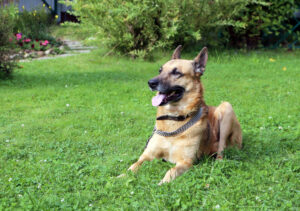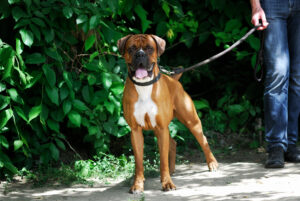Your dog may be a complete sweetheart at home, very welcoming of all new human and canine guests. But when you grab his leash and head out on a walk, he becomes aggressive when encountering strangers – dogs and humans alike. This is known as leash reactivity.
By definition, leash reactivity is an involuntary emotional state that overwhelms a dog’s brain and triggers the fight or flight response. The reasons for this vary, from overstimulation and excitement to fear and anxiety. Factor in that the restriction of leash can force the dog into the fight response because they feel as though they have no safe escape route. If you’re experiencing this with your dog, you’re not alone. Leash reactivity is one of the most common issues dog trainers deal with on a day-to-day basis.
There is good and bad news when it comes to having a leash reactive dog. The good news is that it can be overcome, the bad news is that it requires effort and repetition – which still isn’t that bad! Below are key three key tips when it comes to handling a leash reactive dog:
1. Don’t greet other dogs on leash
This is easily the most important step in helping your dog overcome reactivity on the leash. While it may seem like getting your dog used to greeting others while he is on leash will help him be less reactive – this couldn’t be more wrong. Essentially, you are forcing your dog into a situation in which he has proven he is not comfortable. That’s a quick path to failure.
If you are coming for daycare, wait until there is space in the lobby before entering with your dog. Additionally, give a wide berth to the dogs ahead and behind you. Do not enter the gate box or front door until it is clean. Avoid interactions with other dogs while your dog is leashed. Distance is your friend in this scenario and will keep everyone safe.
2. Have your dog focus on you
It seems obvious that if your dog is focused on you, he can’t focus on outside distractions. Easier said than done. A key step in addressing leash reactivity is developing a strong connection between yourself and your dog when on leash. Most trainers will recommend practicing this indoors with basic obedience sessions done on leash. By keeping treats with you at all times and asking your dog to follow you and some basic commands within the home, you can begin to establish that you are the source of great things (treats!).
3. Redirect before there is temptation
This may be one of the hardest steps in helping your leash reactive dog. True success is found when you can eliminate a reactive outburst before it even happens. This means you need to be very vigilant of your surroundings and what your dog is focusing on. If you see a dog or person ahead of you that may cause a reaction, play offense rather than defense. This means redirecting your dog, either by using positive reinforcement (treats) to get their attention on you, or ever changing direction and avoiding the situation all together.
Frequently, dogs that have difficulty on leash will be just fine in a daycare setting. Once the parent has left the building, the dog no longer feels the need to guard.We lead them to the back, take the leash off and the dog is ready for play time.
Success will look different for every person and dog at first, but with practice and effort you will find your dog more comfortable around other dogs when on leash. If problems persist, reach out to a trainer or veterinarian for a consultation and assistance.

